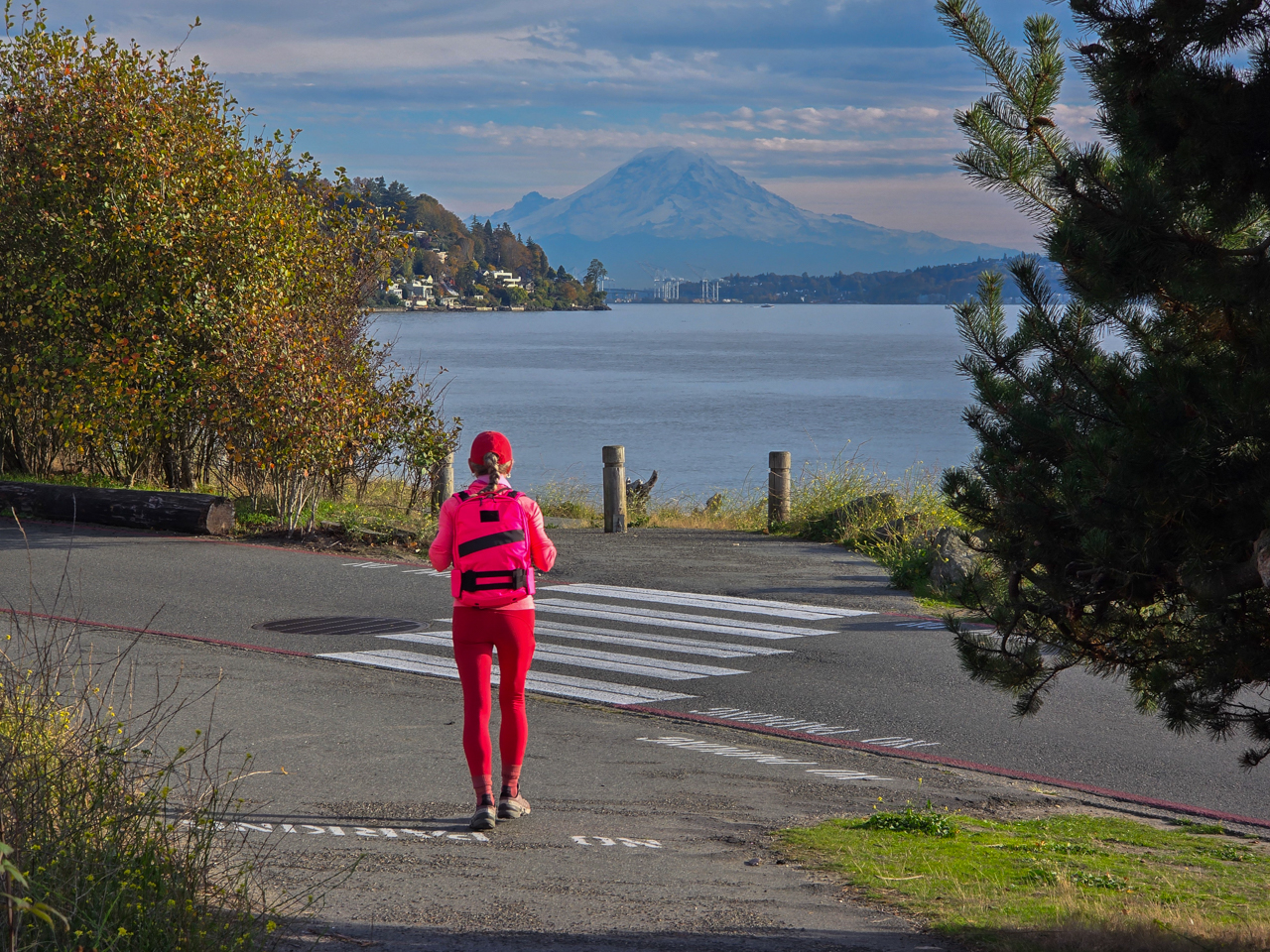
Rucking is a form of exercise derived from military loaded marches, where solders walk for long distances carrying heavy packs. For example, one of the qualifications to earn the Expert Infrantryman Badge in the US military is to complete a 12-mile march in under three hours while carrying 70 lbs of gear. These are called ruck marches after the sturdy rucksacks used to carry their gear.
Rucking has recently been gaining mainstream popularity as a low-impact means of improving strength, balance, endurance and cardiovascular fitness. We initially tried it as a way to get some exercise when on a road trip with no access to a gym. Our first ruck was during a trip to Langley, WA, where we were spending the weekend at a small hotel. To get started, we used our existing Osprey backpacks filled with bottles of water. James carried 23.8lbs and Jennifer 17 lbs.
We did a 4.5-mile hike through Putney Woods County Park that took about 90 minutes. We normally would find an urban park walk rather tame, but carrying the weight and monitoring our pace and heartrate made it much more interesting, challenging, and rewarding. We had a great time, and were looking forward to trying it again.
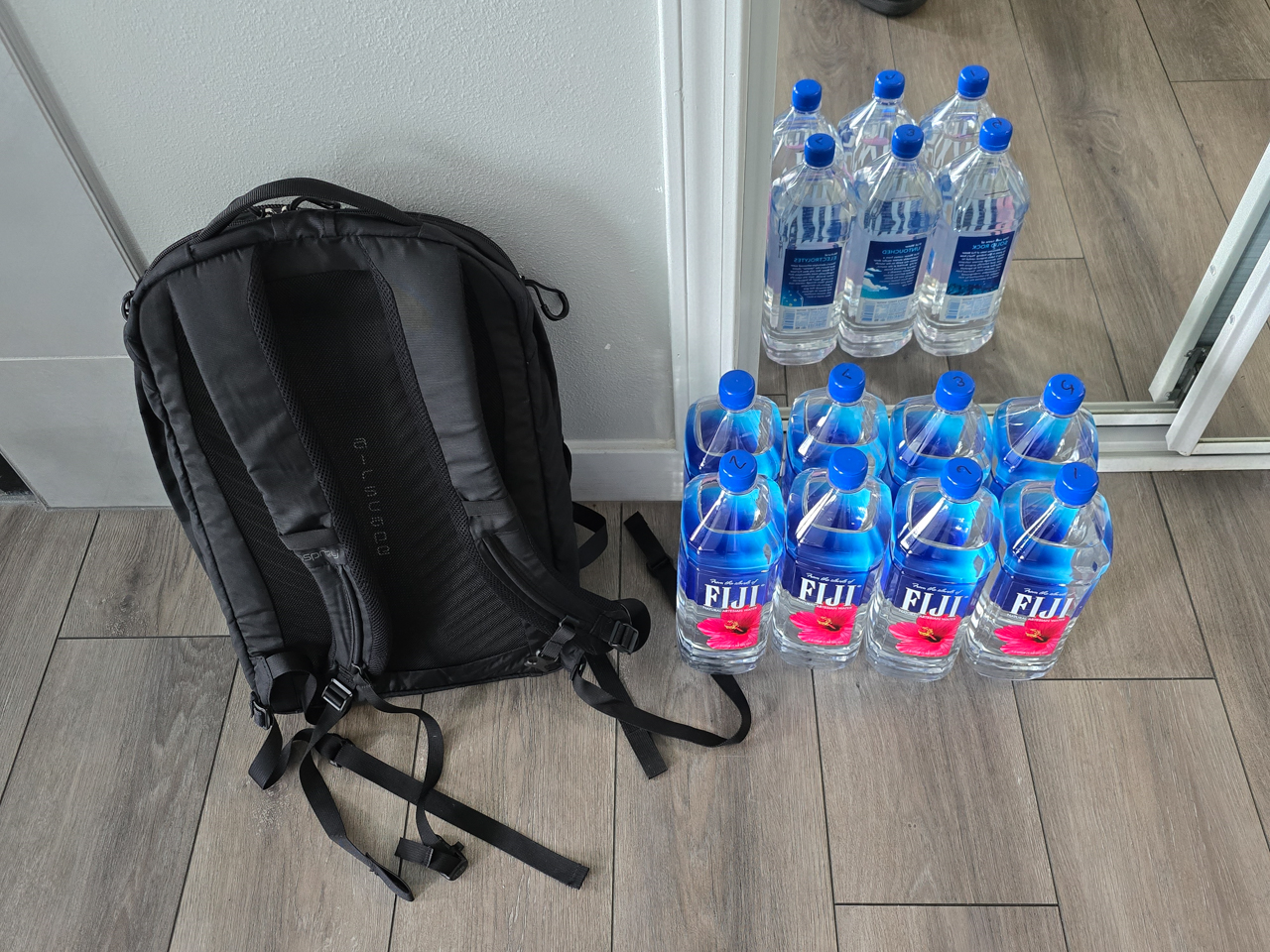
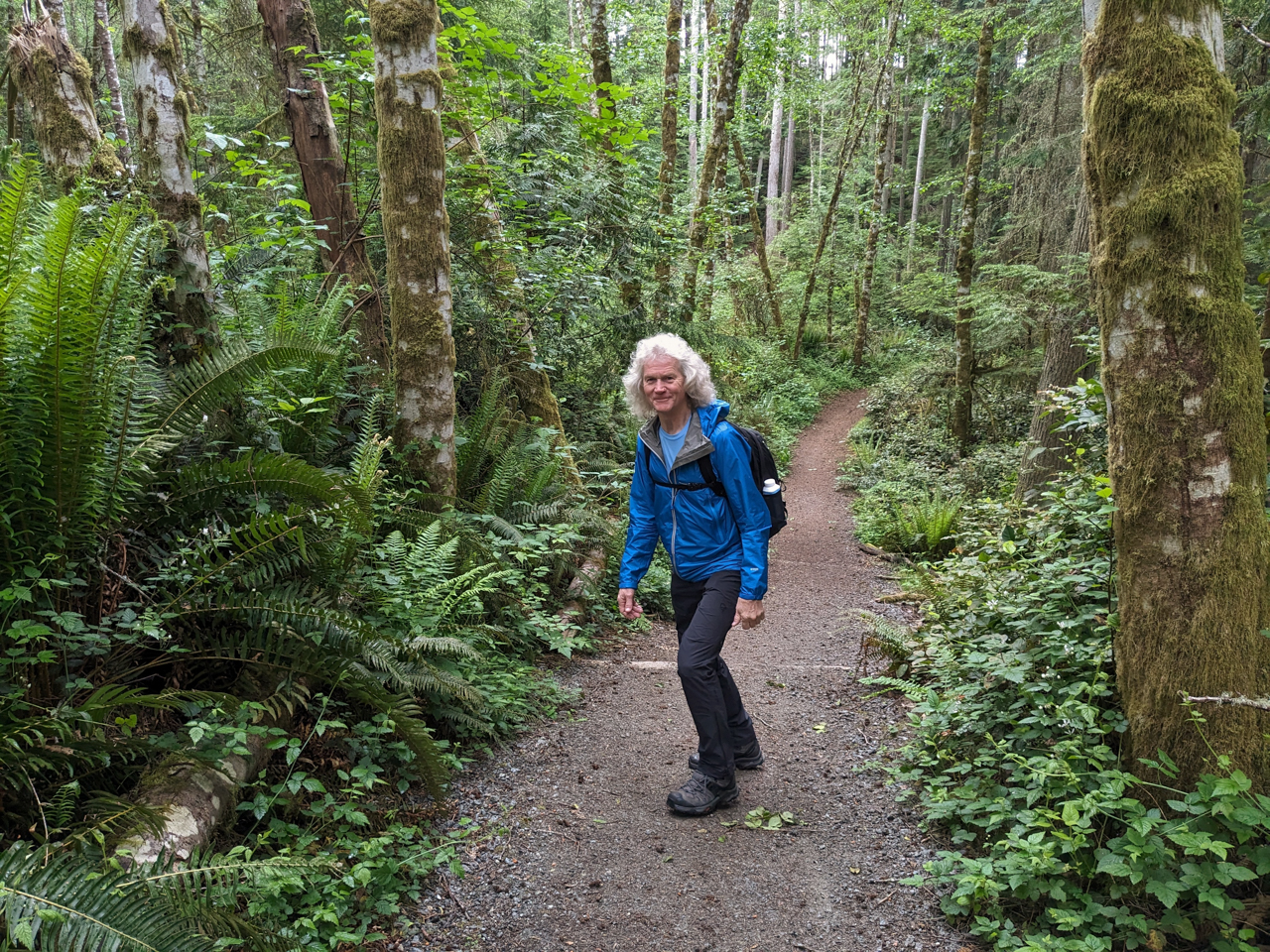
The following weekend we drove to Port Townsend, WA and did two more rucks at Fort Townsend and Anderson Lake state parks, this time carrying an extra bottle of water each, putting James at 27.2 lbs and Jennifer at 20.4lb. We again had a great time, and particularly enjoyed being out into the secluded woods while improving our fitness.


After three rucks, we felt confident enough that we would continue to warrant purchasing special-purpose gear. The water bottle solution worked, but the Osprey packs were at capacity and really weren’t designed to carry that much weight, both from a comfort and durability perspective. Also, carrying the weight higher and closer to our backs would be better for posture and reducing back strain.
After some research, we opted for a 20L and a 15L Rucker 4.0 from GORUCK, plus a selection of ruck plates: 10-, 20- and 30-lb regular size and a 30-lb long. We started out with Jennifer carrying the 20-lb plate and James the 30-lb long. James soon added a 10-lb plate to his pack, and more recently swapped his 10 for Jennifer’s 20 and she now carries 30 lbs with James carrying 50.
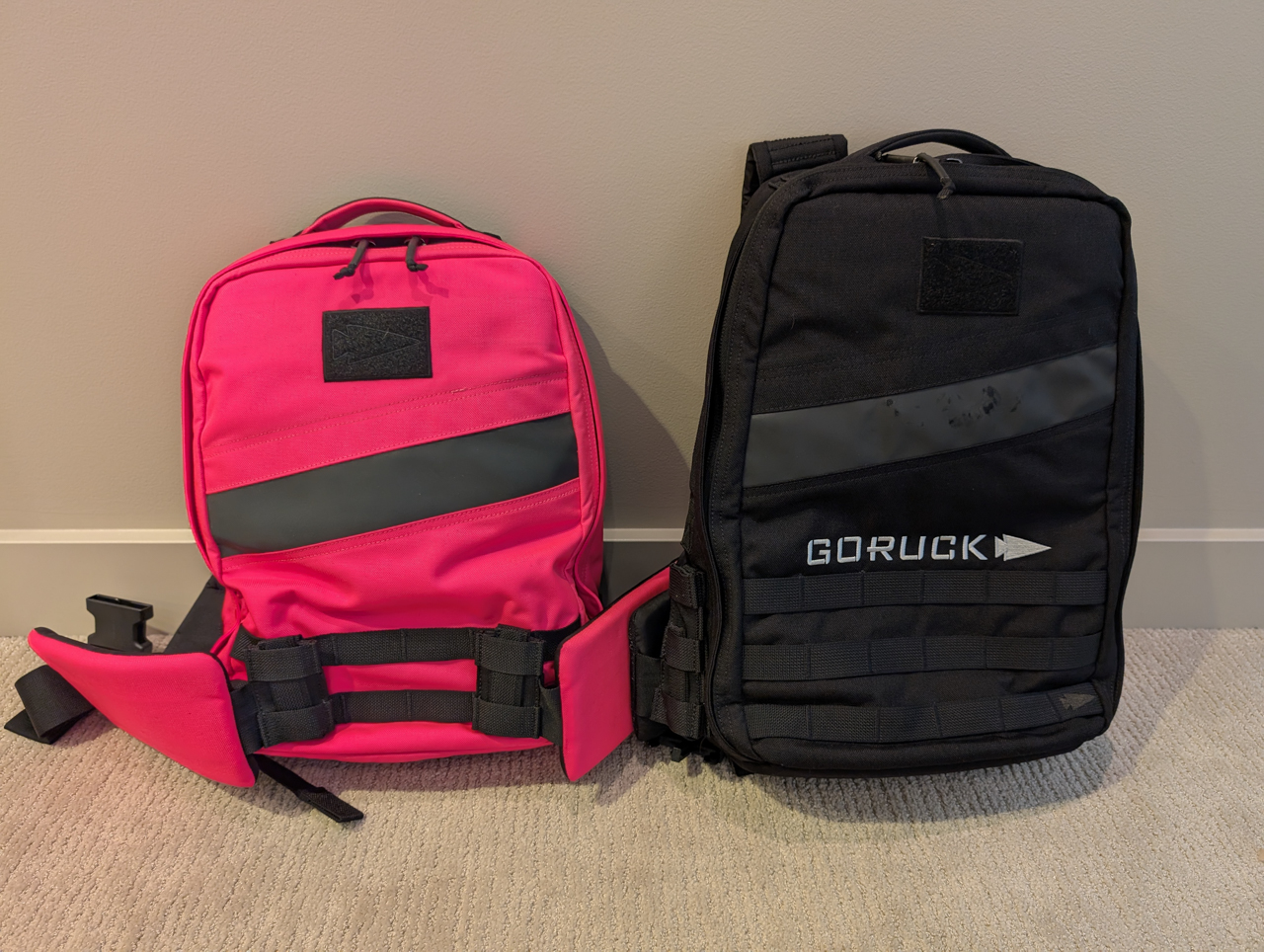
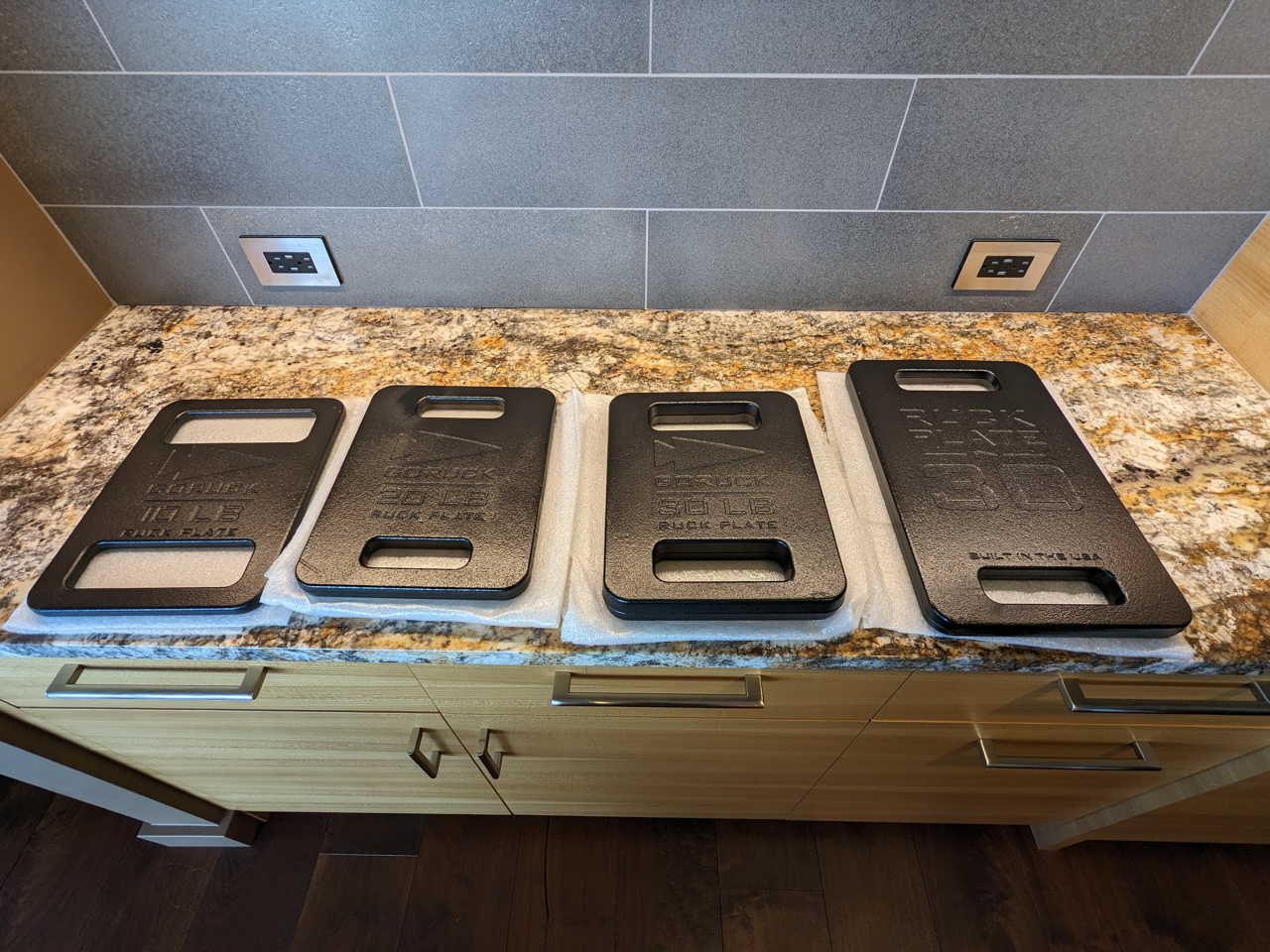
The Rucker is well-built and sturdy, with wide and comfortable shoulder pads that are ideal for carrying the heavy weight. Inside are pockets to hold the ruck plates high and close to our backs.

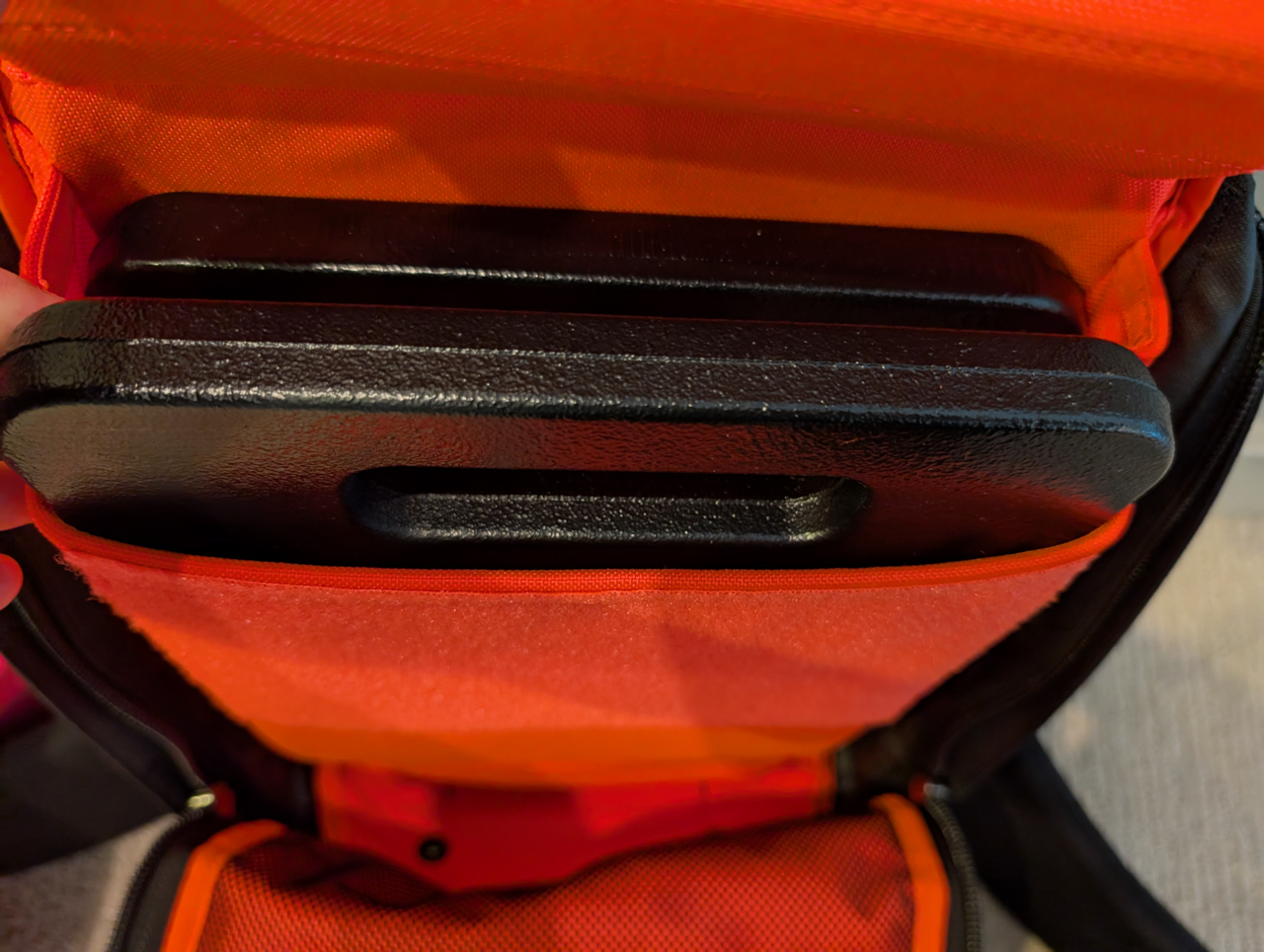
We found the hip belt on our Osprey packs helpful to support the weight of the water bottles. Jennifer’s 15L Rucker came with one, but James’ 20L one didn’t, so we purchased a hip belt for his. The Rucker hip belt is heavily padded and distributes and supports the weight nicely on our hips. We use them on every ruck.
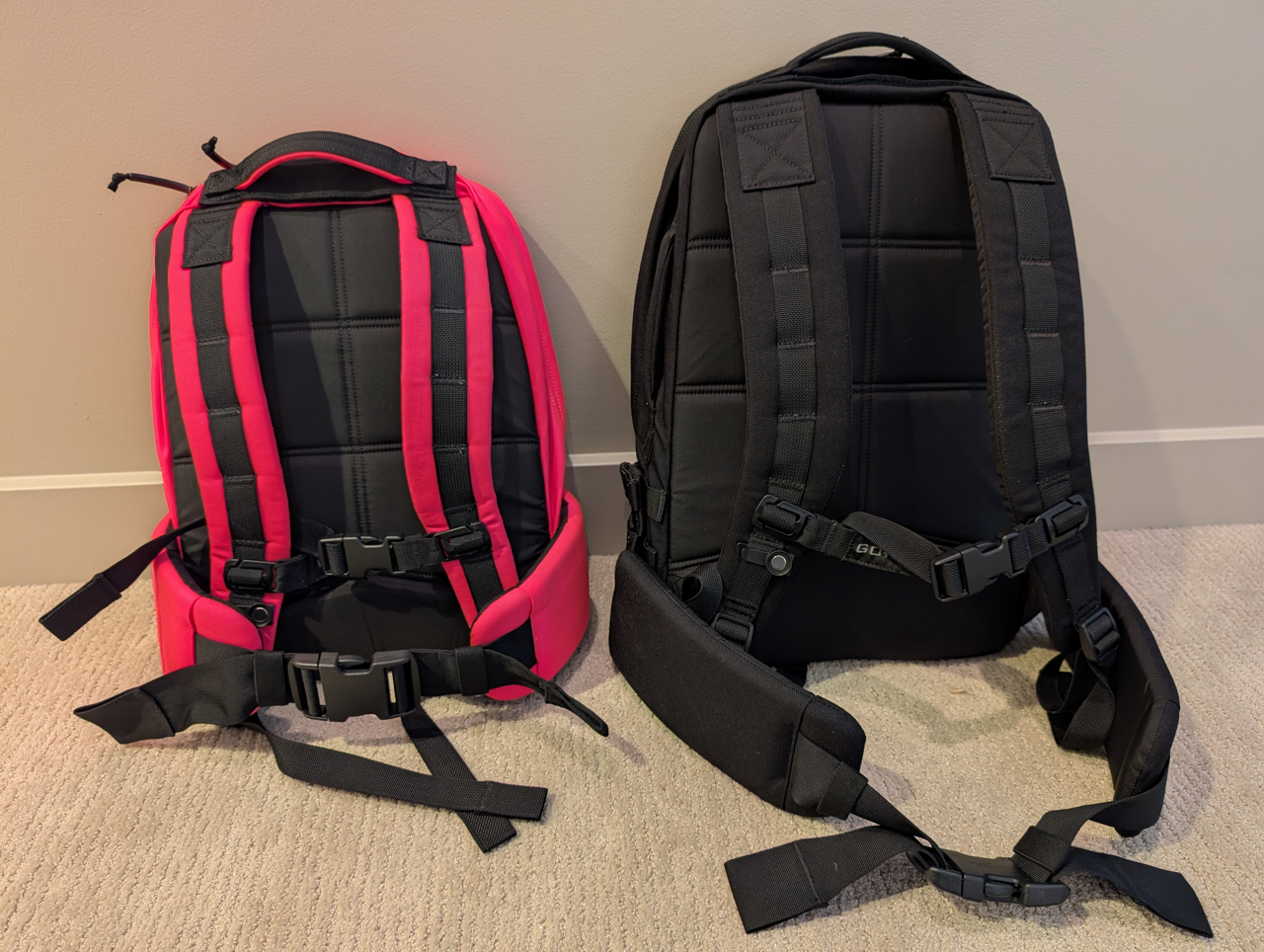
When day-hiking in the past, we carried several small bottles of water in our packs and stashed one in a mesh outer pocket that we switched out as needed. This proved rather cumbersome when trying to maintain a rucking pace, and we didn’t feel we were staying well-hydrated. We instead tried Source Tactical hydration bladders and now carry and drink as much water as we want. The bladders fit nicely in the Ruckers, secured with a small dual carabiner. The Ruckers have a slot for feeding the hydration hose out of the pack, but we just leave the pack slightly open and feed it the hose out and through the top handle, then secure it with a Source Tactical magnetic clip.
We like the bladders so much that they’re now part of our standard hiking gear, and they were particularly welcome on a recent via ferrata climb we made in the Dolomites in Italy. Note: after losing one of the push-pull valves, we switched to a bite valve that we find much more secure, and easier to drink from when in motion.
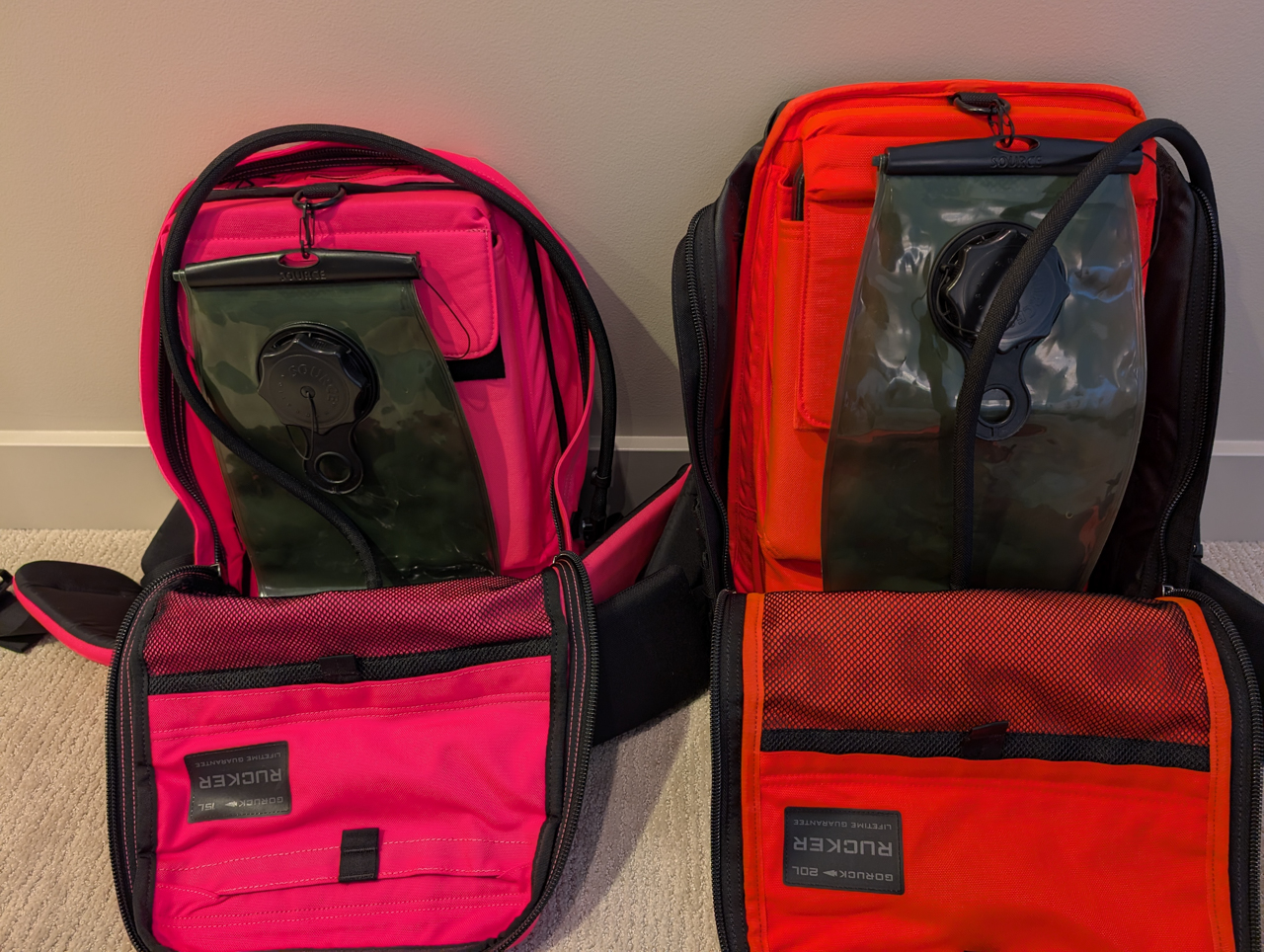
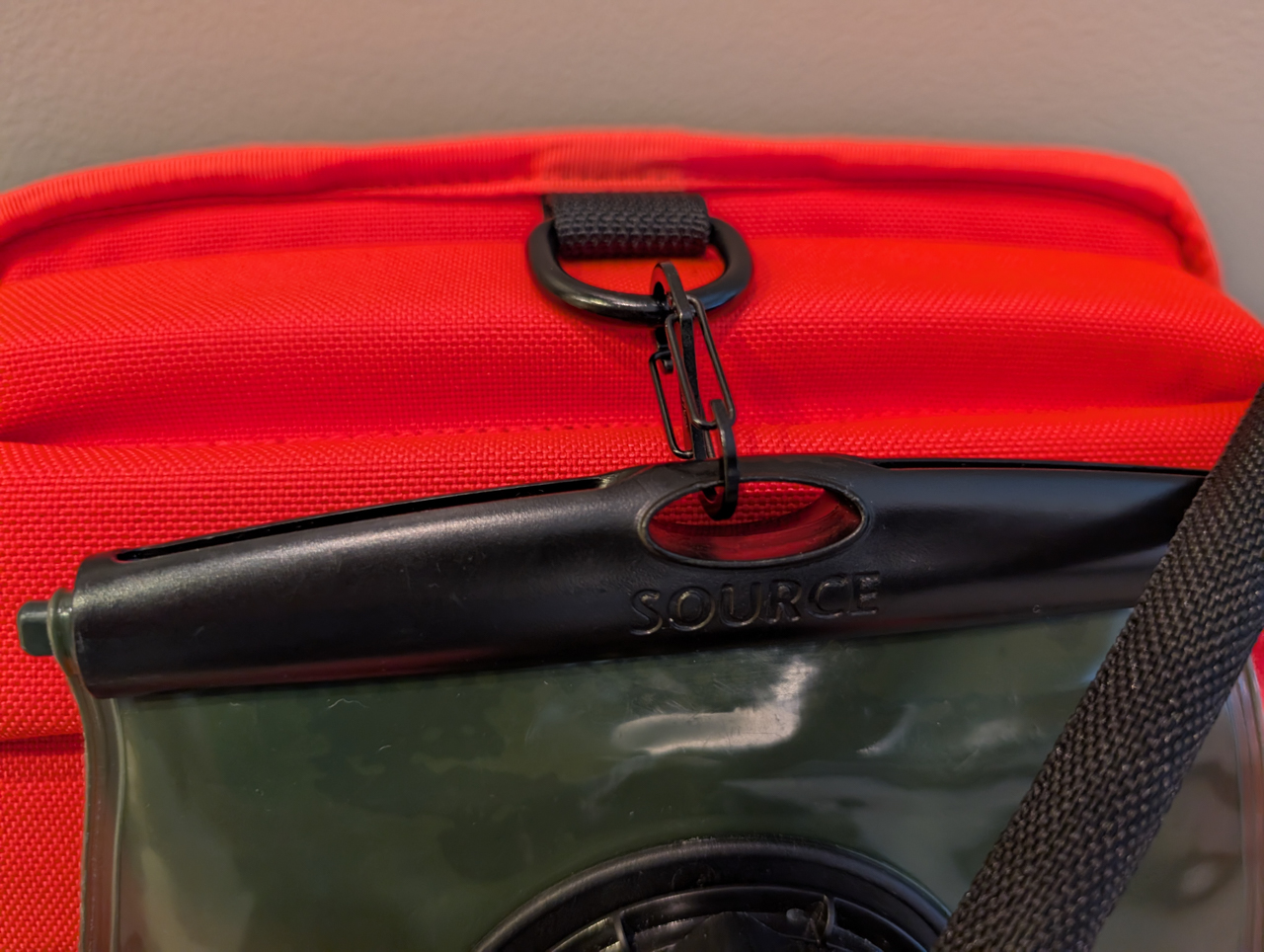
To find appropriate trails, we use AllTrails. Sometimes we find an existing trail that just works, but if not, we use the custom map feature to plot a route that meets our distance and elevation gain goals. We aim for a ruck of roughly four miles with a few hundred feet of elevation gain that will take us about 70-90 minutes to complete.
Our favorite trail in our area is the Discovery Park And Lighthouse Loop, pictured at the top and bottom of this post, about a 20-minute drive from our apartment. The route is 4.5 miles long with several hundred feet of elevation change on the way down to and back up from the beach (we shortcut behind the lighthouse as pictured below). The park has several parking lots and we find that starting off in different lots and alternating the direction between clockwise and counter-clockwise makes the trail feel less repetitive. But it’s similar enough that we can get a sense of how our pace is improving week-to-week.
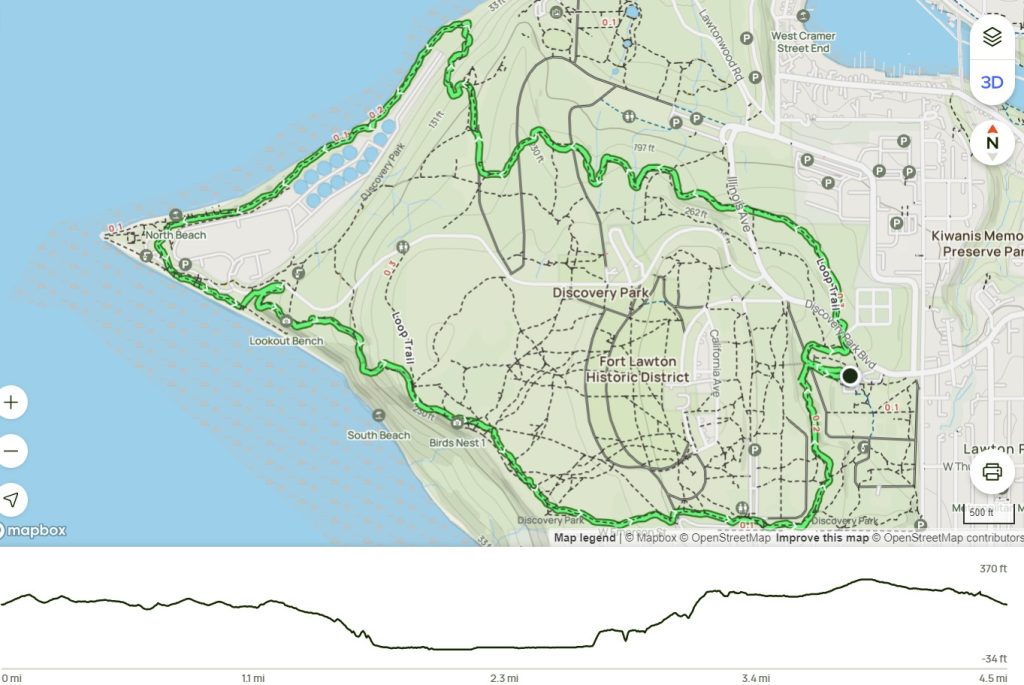
Besides the fitness advantages, we like rucking for several other reasons. One is that it gets us outside more, particularly to urban parks that we wouldn’t normally visit. We find such parks ideal for rucking since the trails tend to be well-maintained and the ground is relatively even with moderate altitude changes. A second is that since we’re used to carrying the weight of the plates, we no longer mind carrying heavier weight when hiking. We find we carry and drink much more water on regular hikes now, particularly with the hydration bladders. Thirdly, rucking helps maintain our day-hiking fitness year-round, since we tend to hike mainly in the summer. A fourth reason is that rucking also fits well into our schedule as a relatively short afternoon activity. For many of the good hiking trails in our area, we have to get out pretty early in the morning to find parking and the hike ends up consuming much of the day. Finally, and perhaps most important, rucking extends our ability to hike as we age. The longer we can walk with weight now, the more mobile we’ll be later in life without carrying weight.

Very inspiring! I tried a weighted vest but gave up quickly since I’m paranoid about another low back issue, but I’m going to give these packs a try. Weight training is SO good for health span!
Your right to be careful of your back Elizabeth. Both Jennifer and I have had a few months of back problems that are very slowly improving. As a consequence, we have both dropped back 10 lbs which we find is easier on the back but it still feels like good exercise. I think there is a very good chance we’ll stay at the current weight in that it seems like a good mix of back safety and exercise.
i have been rucking for the past 3 to 4 months with a goruck pack and initially a 20# weight and now 30#’s so based on info from peter attia, seemed like a good way to upgrade the exercise and health value of walking and hiking, i also like the goruck pack for keeping the weight fairly high up on your back.
Great direction. It’s a good way to turn an walk into real exercise. I’ve moved back down to 40 lbs and I think I’ll probably continue at that weight as a nice balance between easy to handle and good quality exercise.
s/during trip a trip to Langley/during a trip to Langley/
Interesting post. The “like” button doesn’t seem to work though
Hanson,
Thank you for the correction and the feedback. I’m not sure what is going on with the “like” button, but it seems to be working now when it wasn’t a few minutes ago.
Jennifer